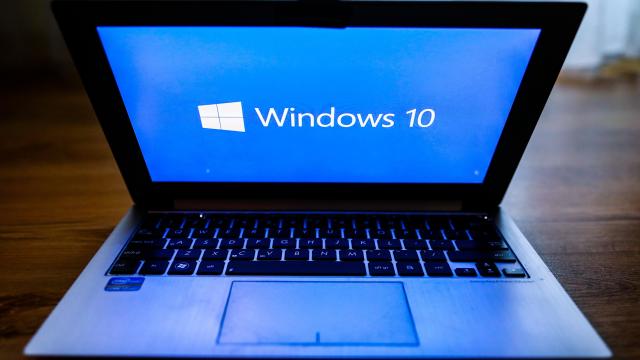All good things must come to an end, and a decade after its first release, Windows 10 will finally be sent to a farm upstate. It had a good run, though Microsoft plans to keep dropping security updates after the OS’ demise on Oct. 14, 2025. Just be aware that the tech giant will force you to dip into your wallet to keep accessing security fixes and small bug hunts.
That date is two years in the future, but Microsoft explained more of its plans in a Tuesday blog post. The current version, 22H2, will be the last of its kind for Windows 10, though it will still get monthly security updates all the way through the OS’ planned death date.
After that, it will enter the “Extended Security Update” program that will allow both companies and individual users to purchase subscriptions to access monthly security updates. Businesses can purchase yearly ESU subscriptions, though Microsoft still has yet to detail how individual users can buy into the program. More importantly, we still don’t know how much it will cost individual users to avoid making the switch.
It’s very much not recommended to keep using any software after it loses security updates, though, of course, you can keep accessing it at your own risk. The company last employed an ESU for Windows 7, which lasted from 2019 up to January of this year. That popular version of the OS received security updates all the way into 2020, even though it was released back in 2009.
If a company pays for Windows 365 on a Windows 10 device that connects to a cloud PC that runs Windows 11, they’ll be able to access the ESU for free. Otherwise, Microsoft is really, really emphasizing that users should move on to Windows 11. It’s still free to switch to the newer operating system, but users wanting to avoid Microsoft’s big Copilot AI push or those increasingly annoying messages and ads to buy into Microsoft’s other software subscriptions may have had a good reason to delay.
Windows 8 lasted about 10 years before it stopped receiving free security updates, but the company decided not to provide ESU service to the much less popular OS. Windows 10, on the other hand, is still much more widely used than the company’s latest version of Windows. Data from Statcounter shows Windows 10 still makes up close to 70% of the market share worldwide compared to just below 27% of Windows 11.
Microsoft is really quite miffed you’re still using Windows 10 rather than jumping onto Windows 11, but there’s also the elephant in the room called Windows 12. We could see Microsoft drop the next version of its operating system before Windows 10 becomes defunct. The Taiwanese outlet The Commercial Times (via Tom’s Hardware) reported last week that Microsoft could release Windows 12 in June 2024.
The next OS could be heavily laden with AI, even more so than Windows 11 already is. Eventually, the only way you’ll be able to keep using Microsoft’s latest operating system is to strap yourself into a cramped, economy seat on the tech giant’s big AI passenger jet.
